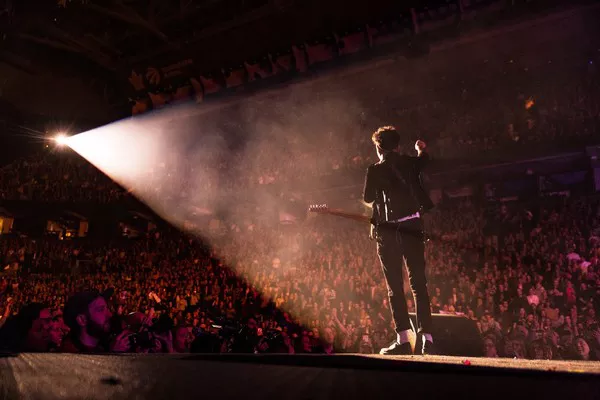In the grand tapestry of human expression, music stands as a timeless thread weaving through the ages. From the rhythmic beats of ancient drums to the complex symphonies of the modern era, the evolution of music is a captivating journey that reflects the dynamic nature of human culture and creativity. How has music evolved? Let’s delve into this fascinating question, tracing the roots of musical expression and exploring the myriad ways in which it has transformed over the centuries.
Ancient Harmonies and Tribal Beats
To understand the evolution of music, we must travel back to the dawn of human civilization. How has music evolved from the primal beats of early tribal gatherings to the structured melodies of ancient civilizations? In the earliest days, music served as a communal activity, connecting individuals through rhythm and melody. Primitive instruments like drums and flutes laid the foundation for a shared sonic experience, playing a pivotal role in rituals and celebrations.
Medieval Melodies and Harmonic Progression
As societies progressed, so did the complexity of their musical expression. The medieval era witnessed the rise of religious chants and courtly music. The introduction of polyphony marked a significant shift, allowing for the harmonization of multiple melodic lines. How has music evolved with the advent of harmonic progression? This period laid the groundwork for the rich tapestry of Western classical music, setting the stage for the compositions of luminaries like Bach and Mozart.
The Renaissance of Creativity
The Renaissance period brought about a flourishing of creativity in various artistic realms, and music was no exception. The emergence of musical notation allowed for more precise documentation and dissemination of compositions. How has music evolved with the refinement of notation and the democratization of musical knowledge? The printed musical score became a catalyst for the spread of musical ideas, enabling composers to reach wider audiences and fostering a greater diversity of styles and genres.
Baroque Brilliance and the Birth of Opera
The Baroque era ushered in a period of ornamentation and grandiosity in music. The development of the opera marked a revolutionary moment in the history of musical expression. Composers like Monteverdi and Handel expanded the possibilities of storytelling through music, creating elaborate works that combined vocal and instrumental elements in unprecedented ways. How has music evolved with the birth of opera, and what impact did it have on the trajectory of musical composition?
Classical Precision and Romantic Expression
The Classical period brought forth a focus on clarity, structure, and emotional restraint in music. Composers such as Haydn, Mozart, and Beethoven crafted symphonies and sonatas that emphasized formal balance and melodic elegance. However, the Romantic era that followed unleashed a wave of emotional expression and individualism. How has music evolved from the precise structures of Classicism to the emotive landscapes of Romanticism? The answer lies in the passionate compositions of figures like Beethoven, Chopin, and Wagner.
Innovation in the Industrial Age
The Industrial Revolution brought about profound changes in society, and music was not immune to its transformative effects. The rise of the middle class and the increased availability of musical instruments led to a surge in amateur musicianship. Technological advancements, such as the invention of the piano and improvements in instrument manufacturing, expanded the sonic palette available to composers. How has music evolved with the integration of these technological and societal changes, and what role did innovation play in shaping musical styles?
See Also: What is the Most Listened to Song on YouTube?
Jazz, Blues, and the Birth of Popular Music
The 20th century witnessed the emergence of new musical genres that would leave an indelible mark on the cultural landscape. Jazz and blues, born out of the African American experience, introduced improvisation and syncopation to a global audience. The advent of recording technology further revolutionized the music industry, allowing for the mass production and distribution of sound recordings. How has music evolved with the rise of popular music, and what impact did genres like jazz, blues, and eventually rock and roll have on shaping the musical tastes of generations?
Electronic Frontiers and the Digital Revolution
The latter half of the 20th century saw the rise of electronic music, marking another transformative phase in musical evolution. Synthesizers, drum machines, and computer technology opened up new possibilities for sound manipulation and composition. The digital revolution of the late 20th century and the early 21st century further accelerated these changes. How has music evolved in the digital age, where artists have unprecedented access to production tools and audiences can explore a vast array of musical styles with just a few clicks?
Global Fusion and Cultural Crossroads
As the world became more interconnected, musical styles from different cultures began to merge and influence each other. Globalization brought about a rich tapestry of musical fusion, where artists draw inspiration from diverse traditions. Genres like world music, fusion, and global pop reflect this cross-cultural exchange. How has music evolved in an era where artists can seamlessly blend elements from different corners of the world, creating a global sound that transcends traditional boundaries?
Contemporary Trends and the Streaming Era
In the 21st century, the music industry underwent a seismic shift with the rise of digital streaming platforms. The way we consume and discover music has changed dramatically, impacting not only the business side of the industry but also the creative process. Social media and online platforms have democratized the music-making process, allowing independent artists to reach global audiences without traditional gatekeepers. How has music evolved in the age of streaming, and what challenges and opportunities does this new landscape present for both artists and listeners?
Conclusion: A Harmonious Continuum
In tracing the evolution of music, we embark on a journey that spans millennia, exploring the diverse landscapes of human creativity and expression. From the primal beats of ancient rituals to the boundless possibilities of the digital age, music has continually reinvented itself, reflecting the ever-changing tapestry of human experience. How has music evolved? It has evolved through innovation, cultural exchange, technological advancements, and the ceaseless quest for new forms of artistic expression. As we stand on the precipice of an unknown musical future, one thing remains certain—music will continue to evolve, adapt, and resonate across the ages, weaving its melodic thread through the fabric of human existence.

























